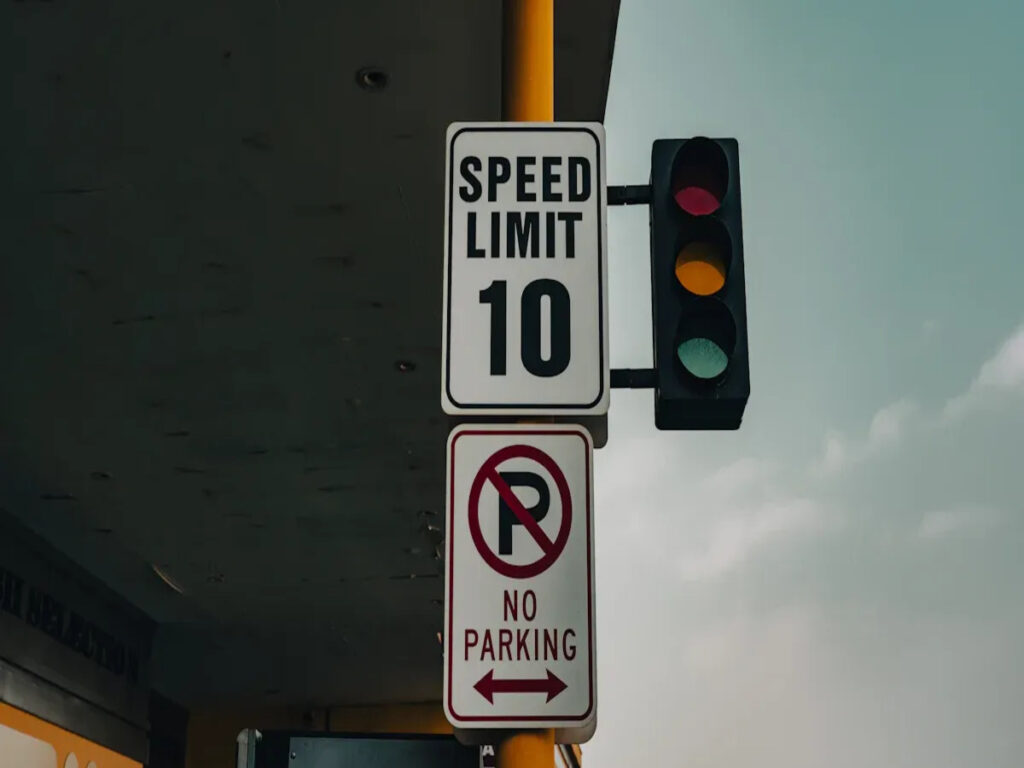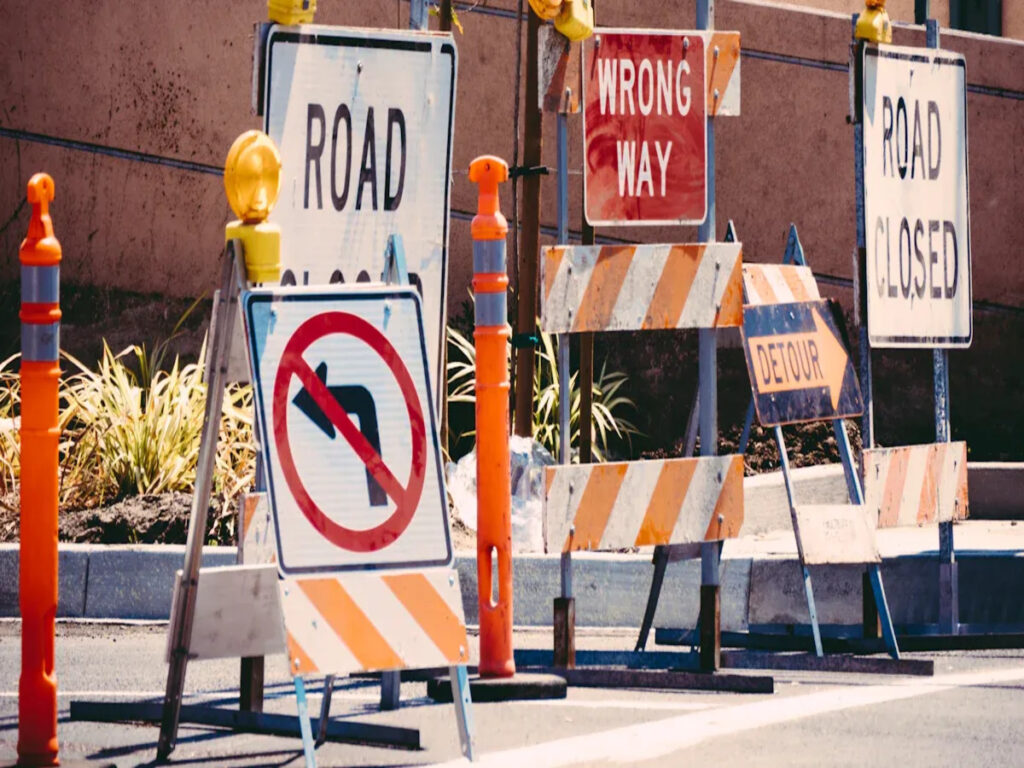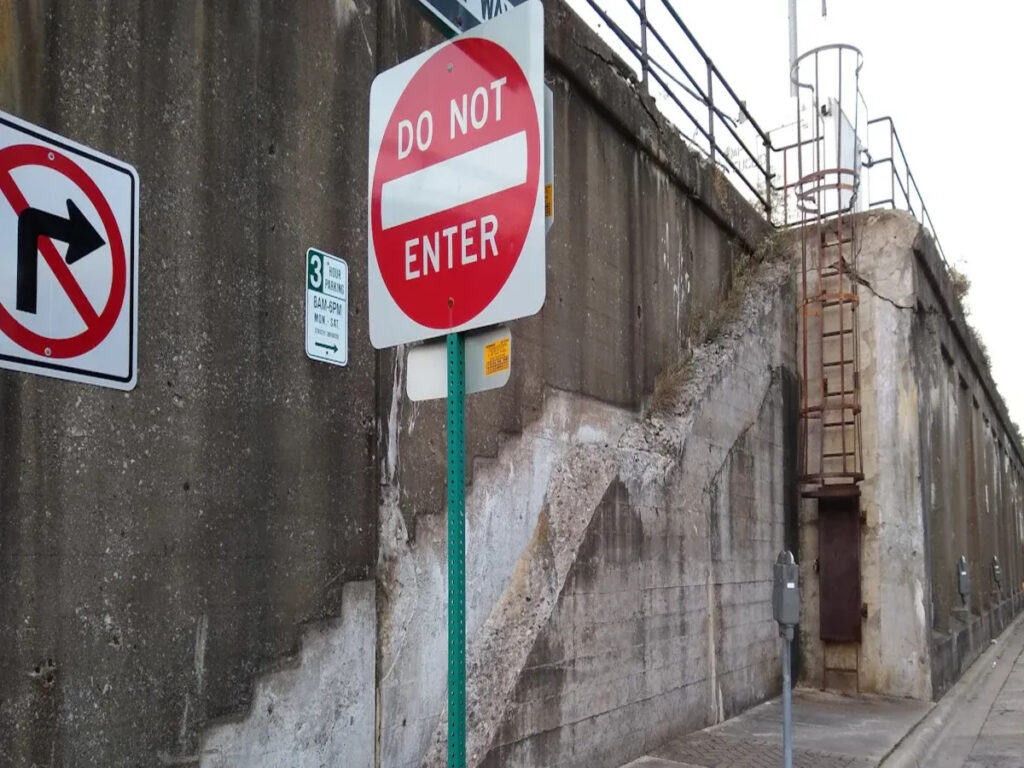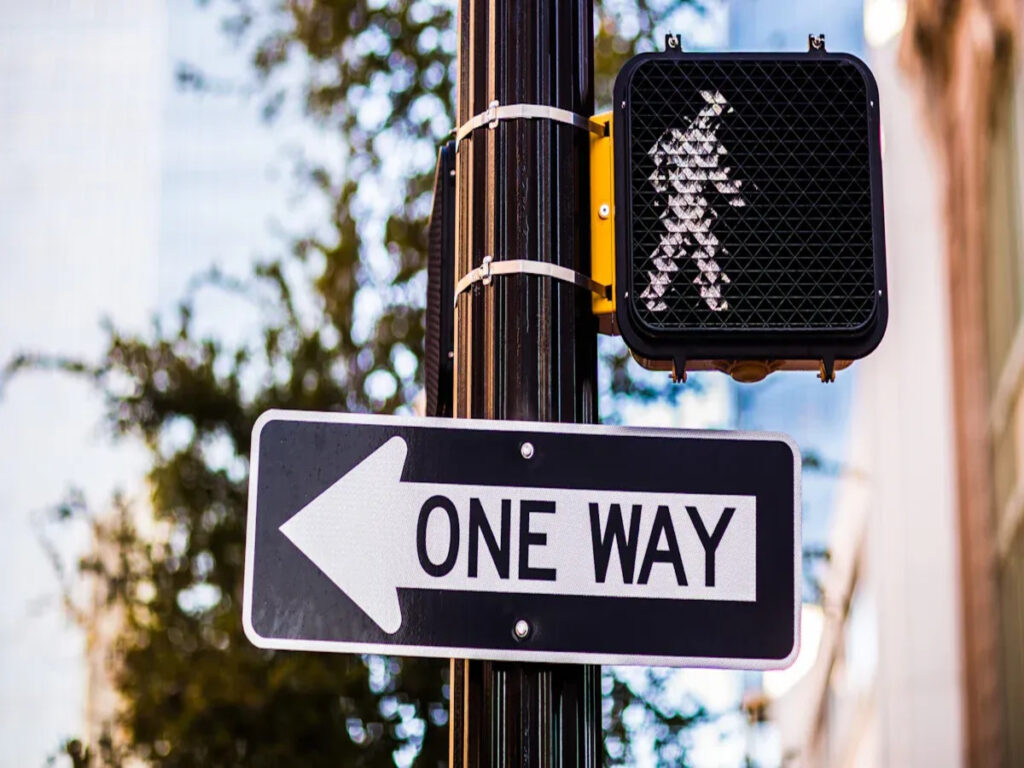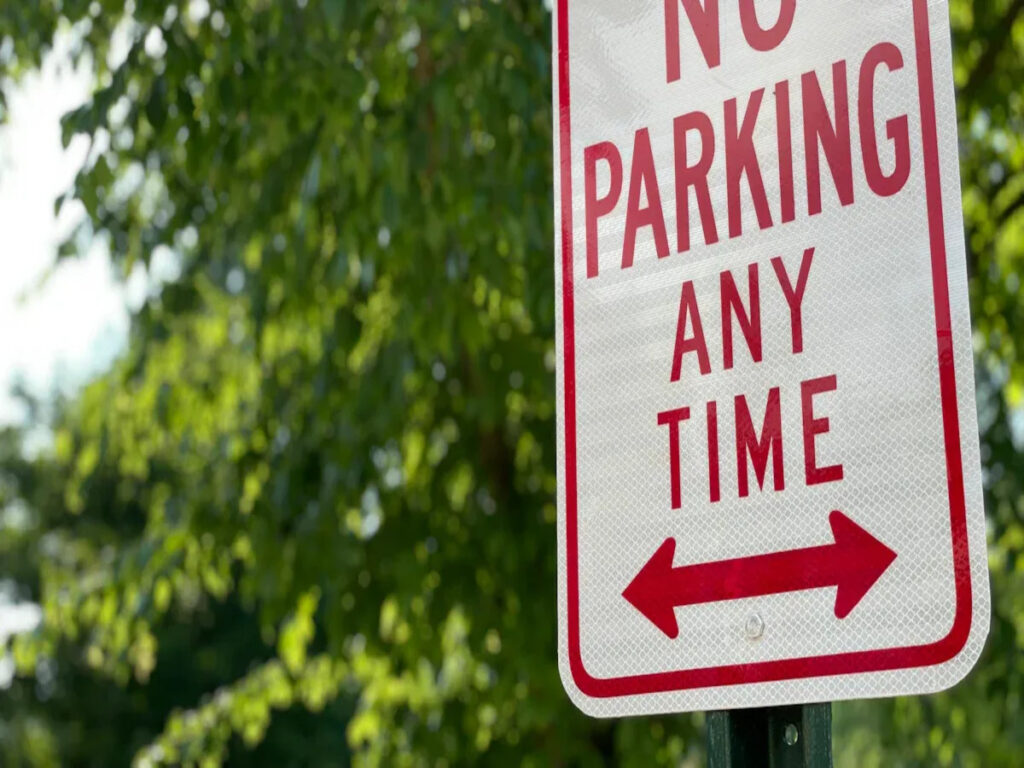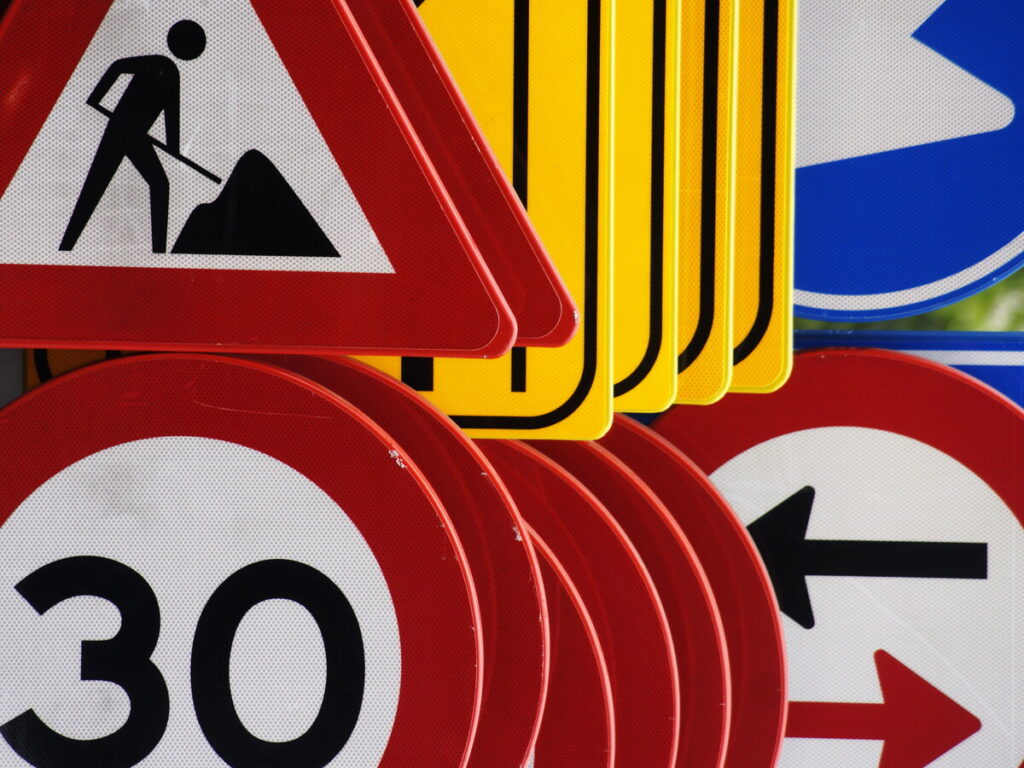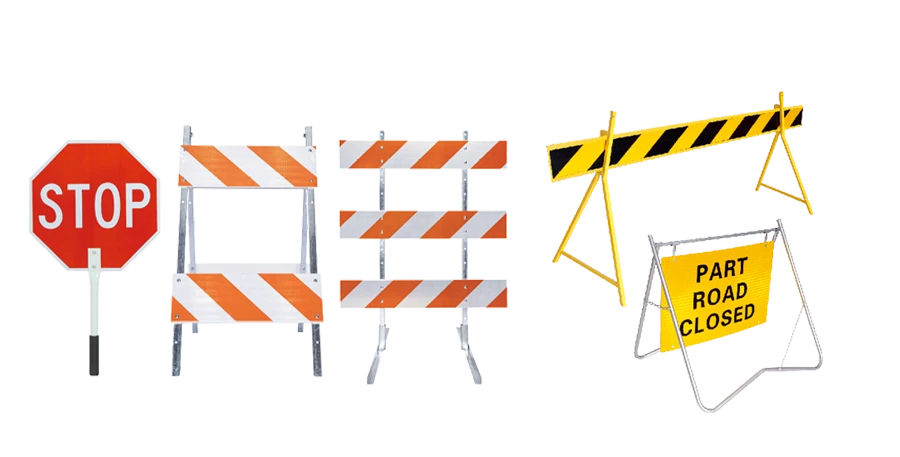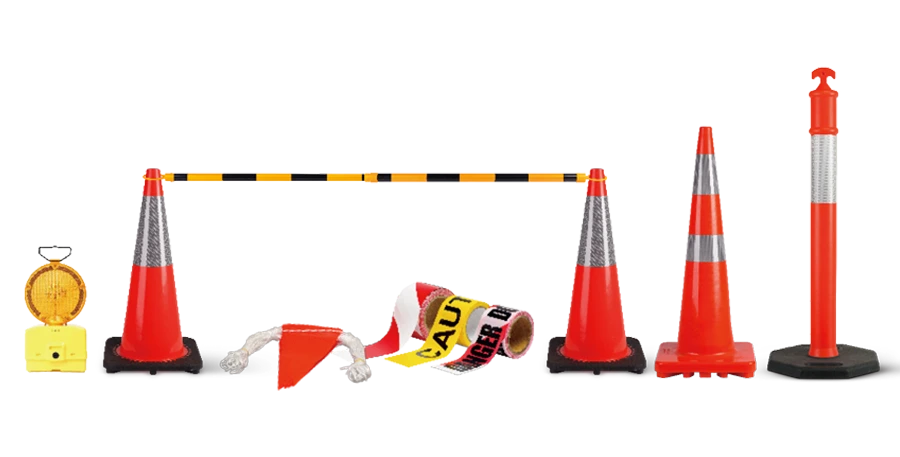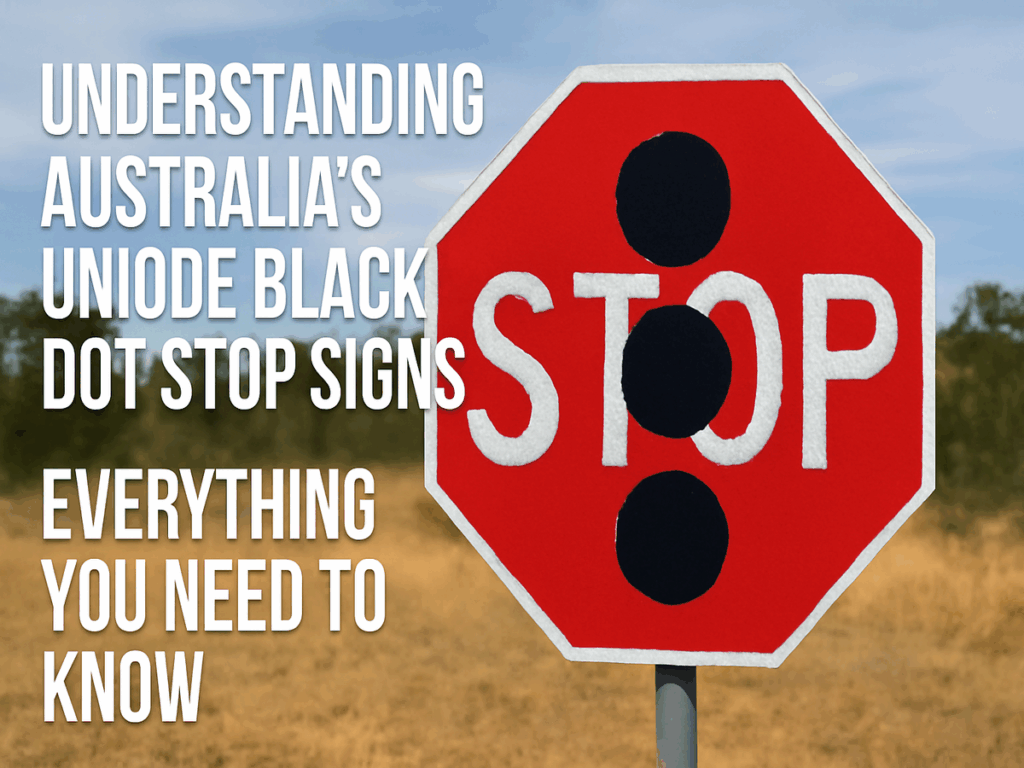
Un autista potrebbe meravigliarsi, “Con cosa fa un segno di stop 3 I punti neri significano a questo incrocio?” Questo segno unico appare agli incroci con il semaforo, Soprattutto quando le luci si spegne o il flash gialle. Il segnale di stop con 3 Black Dots dice ai conducenti di fermarsi, Anche se il segnale rosso non funziona. Il rosso segnala sempre una fermata, Ma questo segno aggiunge ulteriore chiarezza quando i semafori falliscono. Ogni driver, compresi i visitatori, deve capire questa regola per la sicurezza in qualsiasi incrocio.
Forniture optraffic Segni di sicurezza del traffico che soddisfano gli standard australiani, compreso il segno di stop unico con 3 punti neri. Offrendo durevole, segnaletica ad alta visibilità, Optraffic aiuta i consigli, appaltatori, e i gestori di proprietà migliorano la sicurezza stradale e supportano un migliore processo decisionale in ambienti di traffico impegnativi.
Takeaway chiave
- Il cartello di arresto con tre punti neri indica ai conducenti di fermarsi quando i semafori falliscono o flash gialle, Garantire la sicurezza a incroci impegnati.
- I conducenti devono sempre fermarsi alla linea, Cerca altri veicoli, e lasciare il posto prima di muoversi, Anche se la luce rossa non mostra.
- Questo segno consente a sinistra di girare il rosso dopo essersi fermato e lasciare il posto al traffico da destra, Ma solo dove è presente il segno Black Dot.
- I segnali di stop dot neri appaiono principalmente nel Nuovo Galles del Sud, Soprattutto dove i tagli alimentari o il maltempo influiscono sui semafori.
- I tre punti neri aiutano i conducenti a riconoscere il significato speciale del segno e non indicano il pericolo o influenzano le regole di parcheggio.
Cosa è un segnale di stop con 3 Punti neri?

Definizione e scopo
Un segnale di stop con 3 I punti neri si distinguono agli incroci controllati dai semafori, Soprattutto nel Nuovo Galles del Sud. Questo segno dice ai conducenti di fermarsi quando i semafori non funzionano o mostrano un segnale giallo lampeggiante. I tre punti neri sul segno aiutano i conducenti a riconoscere il suo ruolo speciale. A queste incroci, Il cartello funge da backup. I conducenti devono trattare l'intersezione come se avesse un normale segno di stop. Devono fermarsi alla linea, Cerca altri veicoli, e lasciare il posto prima di andare avanti. Il segnale di stop con 3 I punti neri consentono anche una svolta a sinistra dopo essersi fermato, Finché il conducente lascia il posto a tutti i veicoli che provengono da destra. IL Regole sulla strada del NSW E il manuale degli utenti della strada menziona questo segno come guida per i conducenti agli incroci con semafori difettosi.
Nota: Il segnale di stop con 3 I punti neri aiutano a proteggere gli incroci quando i semafori falliscono. Dà istruzioni chiare a ogni driver.
Caratteristiche del design
Il segnale di stop con 3 Black Dots usa la classica forma ottagonale e lo sfondo rosso. Tre punti neri appaiono in una linea orizzontale sotto la parola “FERMARE”. Questo design rende il segno facile da individuare, Anche da lontano. I conducenti di colore rosso segnali per fermare, Mentre i punti neri aggiungono un significato extra. Il segno utilizza materiali riflettenti, Quindi rimane visibile di notte o con il maltempo. I tre punti neri rendono il segno diverso da un segnale di stop standard. I conducenti possono capire rapidamente che questo segno ha uno scopo speciale agli incroci con il semaforo.
| Caratteristica | Descrizione |
|---|---|
| Forma | Ottagonale |
| Colore | Sfondo rosso con lettere bianche |
| Punti neri | Tre punti neri di fila sotto “FERMARE” |
| Posizionamento | Vicino agli incroci con i semafori |
| Materiale | Riflettente per la visibilità notturna e di scarsa illuminazione |
Questo design unico non è solo visivo, è costruito per le prestazioni. Esplorare i materiali e la riflettività che rendono i segnali di arresto dei punti neri durevoli ed efficaci in tutte le condizioni, Visita il nostro blog: Quali sono i segnali di stop dot neri fatti? Materiali, Riflettività, e durata.
Differenze chiave
Il segnale di stop con 3 I punti neri differiscono da un normale segnale di stop in diversi modi. La differenza più importante è il suo utilizzo agli incroci con i semafori. Un segnali di arresto standard controlla gli incroci senza semafori. Il segnale di stop con 3 I punti neri appare solo dove i semafori potrebbero fallire o lampeggiare giallo. I tre punti neri segnalano ai conducenti che devono seguire le regole speciali in questi incroci. I conducenti possono girare a sinistra in rosso dopo essersi fermato e ceduto, che non è sempre consentito ad altri incroci. Il design e il posizionamento del segno aiutano i conducenti a sapere cosa fare quando i soliti segnali non funzionano. Il segnale di stop con 3 Black Dots segue la guida nelle regole della strada del NSW, renderlo uno strumento di fiducia per la sicurezza stradale in incroci impegnati.
Dove vengono usati?
Luoghi comuni
I segnali di stop dot neri si trovano principalmente dove ci sono semafori. Puoi vederli nelle città e in campagna. Consigli e lavoratori stradali mettono questi segnali in cui si verificano molto tagli di alimentazione. I conducenti li individuano su strade e autostrade trafficate. Sono anche in luoghi in cui molte auto si incrociano. Alcune piccole città usano i segnali di stop dot neri quando i semafori non funzionano.
Mancia: I conducenti dovrebbero verificare questi segni agli incroci che spesso perdono potere o hanno problemi.
Fattori ambientali
Il tempo e il terreno dell'Australia hanno effetto in cui vengono utilizzati i segnali di stop dot neri. Tempeste di polvere, Forte pioggia, e il sole splendente può rendere difficile da vedere i normali segni. I punti neri aiutano questi segni a distinguersi con il maltempo. In luoghi lontani, I semafori potrebbero non funzionare a causa di tempeste o poca cura. Gli operai della strada scelgono i segnali di stop dot neri per questi punti per proteggere i conducenti. Il materiale lucido sul cartello aiuta le persone a vederlo di notte o nella nebbia.
Aree di esempio
Molti posti in Australia usano i segnali di stop dot neri in importanti incroci. Nel Nuovo Galles del Sud, Potresti vederli nelle città minerarie e nelle fabbriche vicino. Sono anche lungo le autostrade che attraversano terra vuota. Alcuni incroci di outback hanno questi segni perché la potenza fallisce molto. Città come Broken Hill e Dubbo hanno messo a segno segnali di stop dot neri dove spesso smettono di funzionare. Questi segni dicono ai conducenti quando fermarsi e cedere, Anche se le luci sono spente.
Questi esempi mostrano come i segnali di stop dot neri si adattano a impegnative condizioni australiane, Dagli incroci urbani alle strade di outback remote. Per esplorare come questi segnali di sicurezza migliorano la visibilità nella polvere, bagliore, e ambienti in condizioni di scarsa illuminazione, Leggi il nostro blog: Dalle strade polverose agli avvisi luminosi: Come i punti neri migliorano la visibilità dei segni nell'outback.
Cosa significano i punti neri?
Significato per i conducenti
I tre punti neri su un segnale di stop danno ai conducenti un messaggio chiaro. Questi punti aiutano le persone a sapere che il segno ha uno scopo speciale agli incroci con il semaforo. Quando i conducenti vedono i punti neri, Dovrebbero ricordare di smettere, Anche se il segnale rosso non mostra. I punti fungono da segnale visivo. Fanno risaltare il cartello, Soprattutto in luoghi impegnati o confusi. I conducenti possono individuare il cartello rapidamente, Il che li aiuta a reagire in tempo. I punti neri aiutano anche le persone che hanno difficoltà a vedere i colori. Possono riconoscere il modello e sapere che devono smettere.
Nota: I punti neri ricordano a ogni driver di trattare l'intersezione come una fermata, Non importa cosa vengono visualizzati i semafori.
Non un avvertimento del punto nero
Alcune persone pensano che i punti neri significhino che l'area sia pericolosa o abbia molti incidenti. Questa idea non è corretta. I punti neri non avvertono di un punto nero o di una zona di incidente. Mostrano solo che il segnale di stop funziona con il semaforo. I punti non significano che l'intersezione non è sicuro. I conducenti non dovrebbero preoccuparsi del pericolo extra quando vedono questi segni. Il lavoro principale dei punti neri è aiutare i conducenti a sapere quando fermarsi, Soprattutto se manca la luce rossa o il semaforo non funziona.
Interpretazione legale
Le regole della strada australiana danno il segno di stop Black Dot un chiaro significato legale. Quando i semafori falliscono o mostrano un giallo lampeggiante, La legge dice che i conducenti devono fermarsi al segno. I tre punti neri rendono facile per la polizia e i lavoratori stradali verificare se i conducenti seguono le regole. Il cartello corrisponde agli standard stabiliti dalle autorità stradali. Nel Nuovo Galles del Sud, La legge tratta il segno di arresto del punto nero lo stesso di un normale segno di stop quando la luce rossa è fuori. I conducenti devono fermarsi e lasciare il posto prima di andare avanti.
| Punto legale | Cosa significa per i conducenti |
|---|---|
| Deve fermarsi alla linea | Ferma sempre, Anche se le luci falliscono |
| Obbedisci al segno, non la luce | Segui il segno se manca il rosso |
| Trattato come una fermata normale | Stesse regole di un normale segnale di stop |
Regole per i conducenti
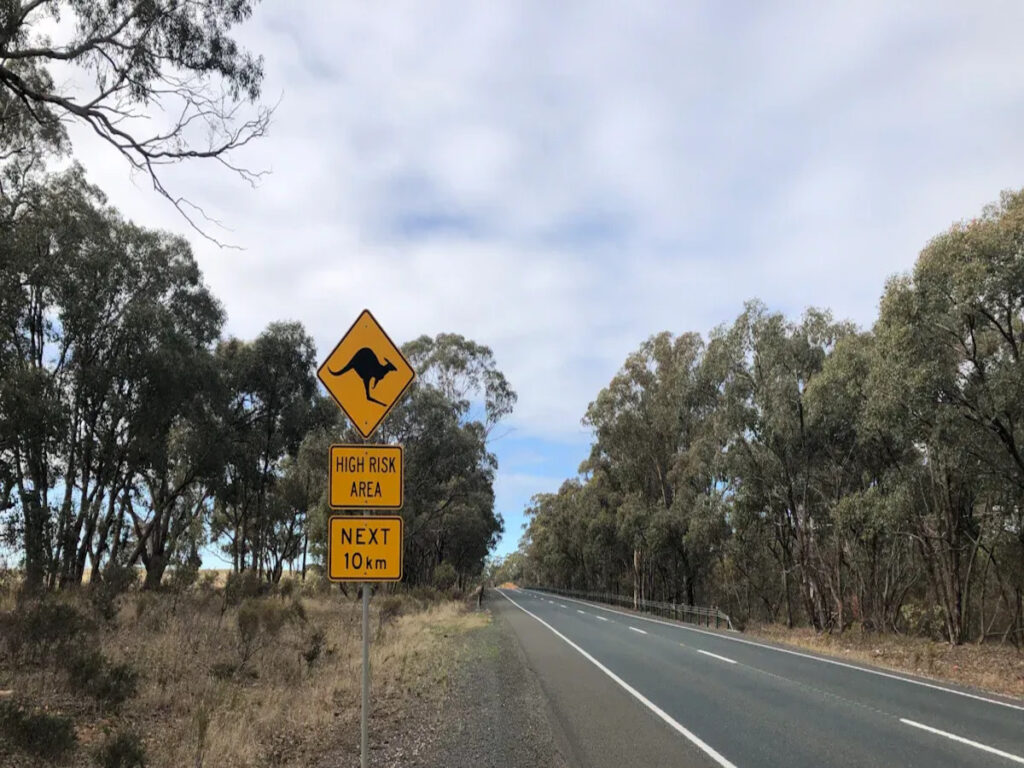
Fermarsi e cedere
I conducenti devono sempre fermarsi a un segnale di stop con 3 punti neri, Anche se manca il segnale rosso o il semaforo non funziona. Il segnale di stop dice a ogni conducente di fermarsi completa alla linea. Dopo essersi fermato, I conducenti devono cercare altri veicoli e lasciare il posto a tutte le auto e pedoni. Questa regola mantiene tutti al sicuro in incroci impegnativi.
Molti incidenti accadono quando i conducenti non si fermano o cedono il posto. I rapporti mostrano i pericoli di ignorare i segnali di stop:
- In 2011, Di 673,000 Gli incidenti sono avvenuti ai segnali di stop negli Stati Uniti.
- Questi incidenti hanno portato a 2,433 morti e 208,000 lesioni.
- Soltanto 17% dei conducenti fermati come richiesto.
- I conducenti spesso copiano gli altri che non si fermano, che aumenta il rischio di incidenti.
Questi fatti mostrano perché fermarsi e lasciare il posto a un segnale di stop con 3 i punti neri sono così importanti. Il colore rosso sul cartello funge da forte avvertimento. I conducenti non devono seguire gli altri che ignorano il segnale di stop. La sicurezza dipende da ogni persona che segue le regole.
Giri a sinistra alle luci rosse
Agli incroci con un segnale di stop con 3 punti neri, I conducenti possono girare a sinistra a un segnale rosso dopo l'interruzione. Il conducente deve prima fermarsi alla linea, Controlla altri veicoli, e lasciare il posto a tutte le macchine che provengono da destra. Questa regola si applica solo dove il segno di stop con 3 Black Dots è presente. Il segnale rosso e il segno di stop lavorano insieme per guidare i driver. Se ci sono restrizioni di parcheggio o nessun segno di parcheggio vicino all'incrocio, I conducenti devono obbedire anche a quelli. I segnali di parcheggio possono influenzare dove un'auto può attendere prima di girare a sinistra. Ignorare le restrizioni al parcheggio può portare a una multa del parcheggio o addirittura a un biglietto di parcheggio.
Applicazione
La polizia e le autorità stradali guardano gli incroci con gli stop segnali con 3 punti neri da vicino. Controllano se i conducenti si fermano sulla linea e cedono come richiesto. Non fermarti o non cedere il posto può comportare una multa. Il colore rosso sul cartello e la linea di arresto rendono facile per gli ufficiali vedere se un conducente infrange la regola. Anche i conducenti che ignorano i segnali di parcheggio o le restrizioni di parcheggio vicino a questi incroci possono ricevere una multa. Nessun segno di parcheggio è comune vicino a incroci occupati per mantenere il traffico in movimento. Se un conducente parcheggia in una zona senza parcheggio, rischiano una multa del parcheggio. I segnali di parcheggio aiutano tutti a capire dove possono e non possono fermarsi. Seguire tutti i segni, compresi i segnali di stop, Segni di parcheggio, e nessun segnali di parcheggio, aiuta a evitare le multe e mantengono al sicuro gli incroci.
Mancia: Controlla sempre i segnali di parcheggio e le restrizioni di parcheggio prima di fermarsi o girare agli incroci. Questa abitudine può aiutare a evitare una multa del parcheggio e mantenere la strada sicura per tutti.
Idee sbagliate e chiarimenti
Confusione con le aree del punto nero
Molti conducenti vedono i segnali di stop dot neri e pensano di segnare un'area pericolosa. Alcuni credono che questi segni mostrino a “punto nero” Dove accadono molti incidenti. Questa idea non è corretta. I segnali di stop dot neri non avvertono sui luoghi soggetti a incidenti. Aiutano i conducenti a sapere cosa fare quando i semafori non funzionano. I punti neri rendono il segno facile da individuare, anche in maltempo o di notte. I conducenti non dovrebbero confondere questi segni con avvertimenti di Black Spot, che usano segni e simboli diversi.
Questi incomprensioni evidenziano quanto facilmente i segnali stradali possano essere errati. Per saperne di più su ciò che il segnale di stop dot nero significa veramente - e perché è spesso frainteso - leggi il nostro blog: Il segnale stradale più frainteso in Australia: Miti di debunking sui punti neri.
Quello che non significano
I segnali di stop dot neri non significano che ci sono regole extra sui segnali di parcheggio o nessuna zone di parcheggio. Questi segni non cambiano il significato dei segnali di parcheggio disabili o altri segnali di parcheggio vicino all'incrocio. I conducenti devono ancora seguire tutti i segnali di parcheggio, compresi quelli per nessun parcheggio o parcheggio disabile. I punti neri non significano che un autista riceverà una multa del parcheggio o un biglietto per il parcheggio solo per fermarsi al cartello. Una violazione di fine o parcheggio si verifica solo se un conducente infrange le regole mostrate sui cartelli del parcheggio o ignora un area di parcheggio senza parcheggio.
Nota: I segnali di arresto del punto nero dicono solo ai conducenti di fermarsi quando i semafori falliscono. Non influenzano le regole o le multe del parcheggio.
Istruzione pubblica
I gruppi di sicurezza stradale e i consigli lavorano per insegnare ai conducenti i segnali di stop dot neri. Usano volantini, siti Web, e campagne di sicurezza stradale. Questi gruppi spiegano che i punti neri non si riferiscono ai segnali di parcheggio, multe di parcheggio, o biglietti per il parcheggio. Mostrano anche come individuare la differenza tra i segnali di stop dot neri e gli avvertimenti del punto nero. I conducenti apprendono che seguire tutti i segnali di parcheggio, compresi i segnali di parcheggio disabilitati, aiuta a evitare una violazione del parcheggio o una multa. Una buona istruzione pubblica aiuta tutti a comprendere il vero significato di questi segni e mantiene le strade più sicure.
Il segnale di stop con 3 I punti neri aiutano i conducenti a sapere quando fermarsi agli incroci con semafori difettosi. Questo segno migliora la sicurezza e riduce la confusione. I conducenti dovrebbero sempre verificare la presenza di altri veicoli, Obbedisci a tutti i segni, e rimanere vigile. Una semplice lista di controllo può aiutare:
- Fermati alla linea.
- Cerca il traffico.
- Guarda i segnali di parcheggio disabilitati.
- Evita la violazione del parcheggio seguendo tutte le regole.
Rimanere informati sulle regole della strada locale mantengono tutti al sicuro sulla strada. Per uno sguardo più profondo su come i segnali di stop differiscono tra le regioni - e cosa significano queste variazioni per i conducenti, esplorare il nostro blog: Esplorare i diversi tipi di segnali di stop: Comprensione delle variazioni globali e il loro ruolo nella sicurezza del traffico.
Domande frequenti
Cosa significa il segno di stop con punti neri?
A alcuni incroci con i semafori, Potresti vedere un segno di stop ottagonale rosso contrassegnato da tre punti neri verticali. Secondo il Governo del Nuovo Galles del Sud, Il significato è:
“Alcuni incroci con il semaforo hanno una "fermata’ Segno con tre punti neri. Se le luci non funzionano o lampeggiano giallo, È necessario seguire le stesse regole di un segnale di stop.”
👉 Interpretazione:
Questo segno funge da istruzione di sicurezza di backup. Se i segnali stradali non funzionano o si lampeggiano dall'ambra, devi fermarti completi all'incrocio e procedere solo quando è sicuro, Esattamente come se l'incrocio non avesse affatto segnali.
Cosa significa un punto nero su un cartello stradale?
Mentre raro, punti neri sono utilizzati per il miglioramento della visibilità o per aggiungere un significato didattico. Sui segnali di stop, Tre punti formano una linea verticale per aiutare distinguerli in scenari di traffico complessi, Soprattutto nelle regioni rurali o soggette a fallimenti del segnale.
Perché ci sono segni di stop con punti neri?
Questi segni sono particolarmente comuni nelle intersezioni regionali o in outback in Australia, dove il fallimento del segnale è più probabile a causa di condizioni ambientali come la polvere, Calore, o interruzioni di corrente. I punti neri migliorano il riconoscimento visivo da lontano e rafforzano l'importanza del segno.
Sono segnali di stop dot neri usati al di fuori del Nuovo Galles del Sud?
La maggior parte dei segnali di stop dot neri appaiono nel Nuovo Galles del Sud. Alcune altre regioni possono usarle, Ma rimangono rari fuori dal Nuovo Galles del Sud. I consigli locali decidono dove installare questi segni.
Cosa significano tre punti neri su un segnale di stop?
Essi Non rappresentare i colori del semaforo. Invece, I tre punti segnalano a Regola di fermo di emergenza, attivato quando le luci non funzionano correttamente. Questo sistema è Enshrined nei codici australiani di segnaletica stradale Per garantire la sicurezza dell'intersezione.

